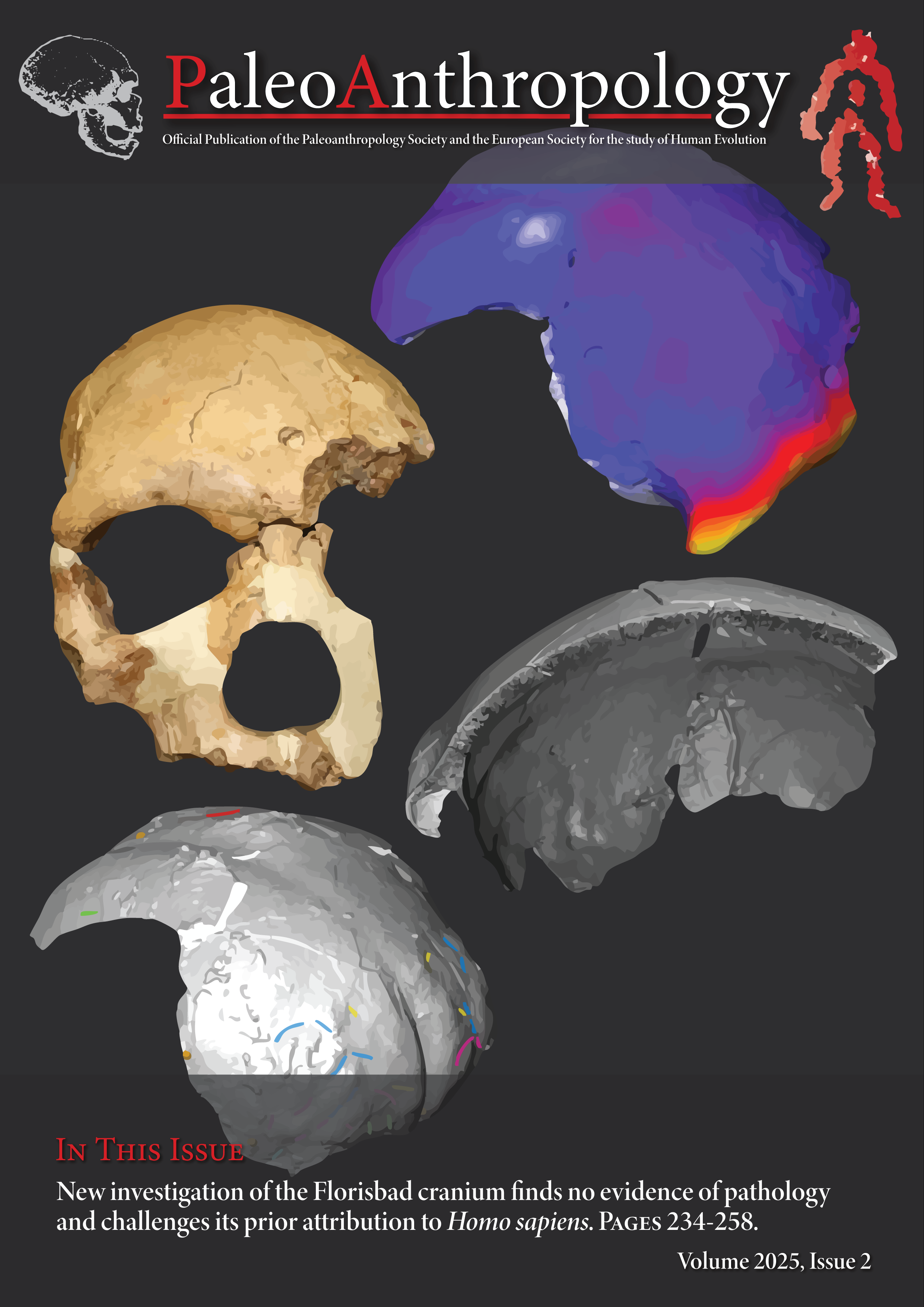Revisiting the Anatomy of the Florisbad Hominin Cranium: Visualization of New Internal Features and Observations on Its Supposed Pathologies Inside the Florisbad Calotte
Main Article Content
Abstract
Among the Middle Pleistocene African fossils that are central to discussions about the evolution of Homo sapiens is the partial cranium from Florisbad, South Africa. The fossil, dated to MIS 8 (300–243 ka BP), combines some primitive traits that are shared with Homo erectus or H. rhodesiensis relative to H. neanderthalensis and H. sapiens, together with derived features shared with H. sapiens relative to H. erectus. It has been proposed that the specimen suffered from pathological conditions that resulted in an asymmetric and exaggeratedly thick vault together with external and internal lesions. Such pathologies could complicate anatomical comparison and attribution of the specimen. The purpose of the present work is to re-examine the calotte and provide new information on several aspects of its anatomy. We review the purported pathological conditions of the specimen, particularly those related to calotte asymmetry and the structural composition and thickness of the vault bone, employing micro-CT scan data, which also enabled description of the frontal sinuses, details relating to the diploic vessels and cerebral imprints on the endocranial surface. We compare several cranial traits seen in Florisbad with those observed in different hominin specimens.
Detailed investigation of the supposed pathological traits of Florisbad reveals that they are all consistent with conditions observed for non-pathological living human and fossil hominin crania. The claim that pathology has altered the symmetry of the vault, as well as its thickness, distribution, and internal structure, is not supported.
We also describe previously unreported aspects of anatomical features in which Florisbad differs from those observed exclusively in H. sapiens, including aspects of bone thickness distribution, the extension of the diploic system, and proportions of the endocast. Our results illustrate that in terms of cranial bone distribution and endocranial proportions, Florisbad most closely resembles the somewhat older Middle Pleistocene cranium from Kabwe 1, but it does not share the exceptionally large frontal sinuses seen in the Kabwe 1, Bodo, and Petralona crania. In sum, the results of this study suggest that the attribution of the Florisbad cranium to Homo sapiens may be unwarranted owing to the number of features in which it lacks the apomorphic states exhibited by our species.

